A twist on the classic vintage diner recipe, 10 minutes and four simple ingredients are all it takes to whip up this delicious mango shake. It can be made with fresh or frozen fruit chunks and is easily customized for sweetness and non-dairy ingredients.
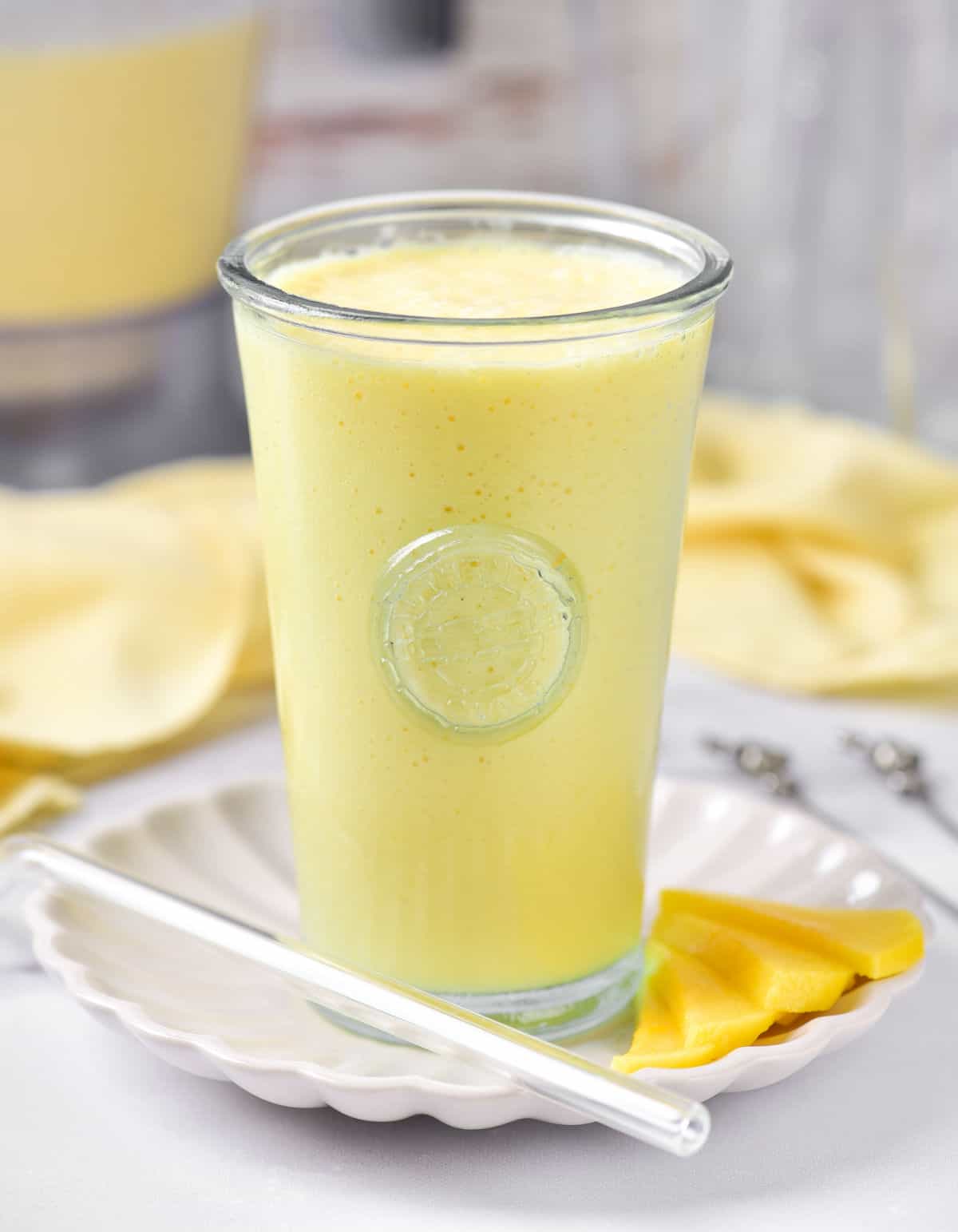
A twist on a classic
The beauty of a fresh mango shake lies in its simplicity and versatility.
If you already have peeled mango pieces, it's even quicker.
It's a vintage recipe, still widely enjoyed during the summer season. We use our easy ice cream with condensed milk that helps with creaminess.
Mango lends a fruity but not overpowering taste to an already line of ingredients that make up the base of any milkshake: ice cream, milk and ice.
- Sweet and refreshing: mangoes are packed with natural sweetness and have a fresh, fruity flavor.
- Quick and easy: you only need 5 to 10 minutes and a blender, making it a perfect drink for hot summer days or busy mornings.
- Familiar and comforting: even though mango is not an everyday fruit, this milkshake is old-fashioned and crowd-pleasing.
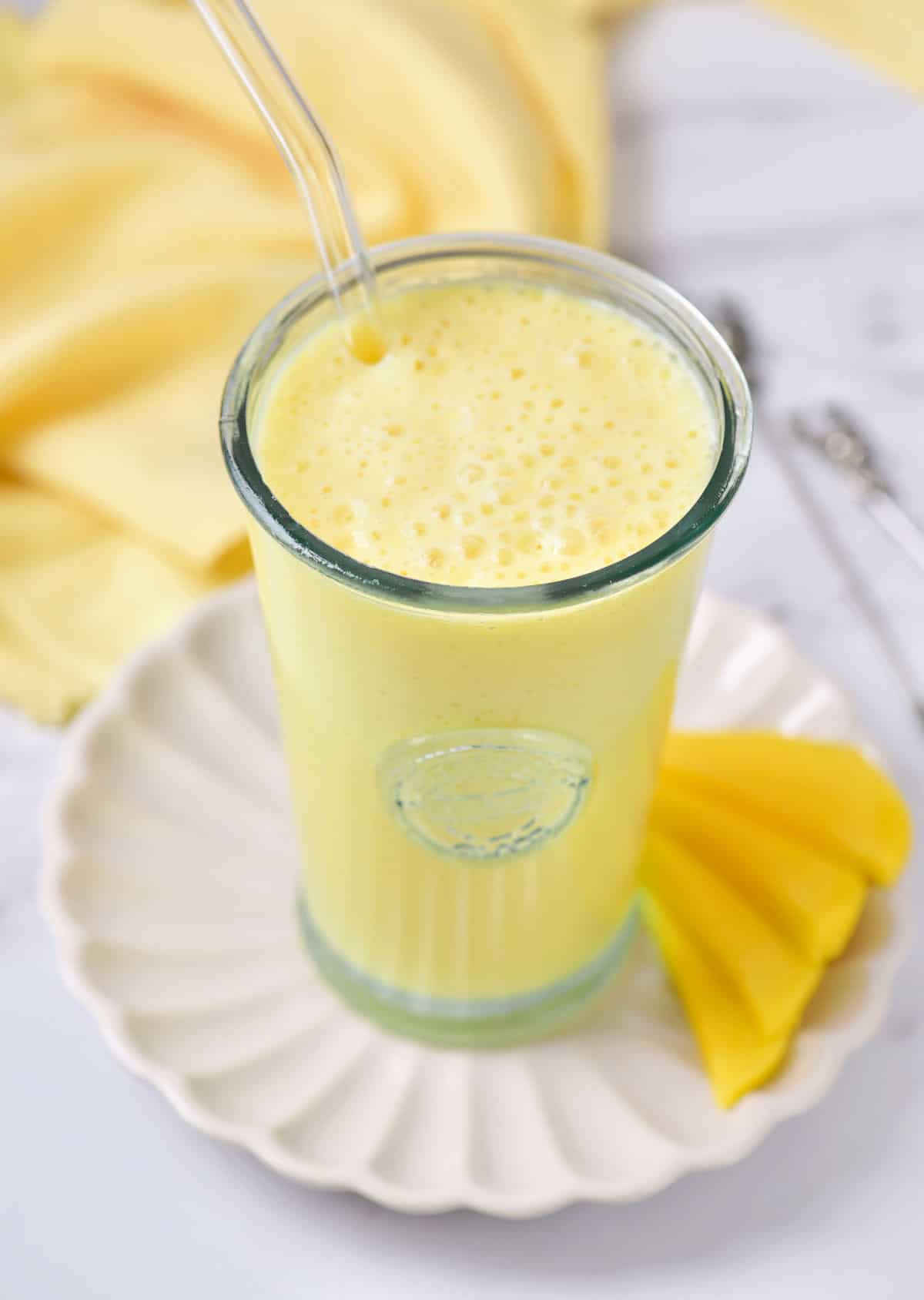
Ingredient Notes
- Vanilla ice cream: homemade or store-bought.
- Mango: fresh or frozen.
- Milk: full-fat whole milk or reduced-fat milk.
Quantities are listed in the recipe card towards the end of this post. The Ingredients page has more details and lists the brands we use.
Variations & substitutions
- Alternative kinds of milk: substitute almond milk, cashew milk, oat milk, soy milk or other non-dairy milk for the regular milk in the recipe.
- Ice cream: use a different flavor like cream, passionfruit, orange, caramel or mango ice cream. The flavor will vary, so test on a small amount.
- Spices: add a dash of ground cinnamon, cardamom or nutmeg for a more earthy flavor.
- Mango lassi: substitute the ice cream for natural yogurt and add a pinch of ground cardamom.
How to choose fresh mangoes
There are different varieties of mangoes, each with their particularities. As a general rule, follow the tips below.
- Color: look for mangoes that have vibrant, rich colors. Depending on the variety, ripe mangoes can range from greenish-yellow to reddish-orange. Avoid those with a lot of green, as they might not be fully ripe or overly dark or have black spots, as they might be overripe or damaged.
- Firmness: gently squeeze the mango. It should yield slightly but not be too soft or mushy. If it's too hard, it's likely underripe; if it's too soft, it might be overripe.
- Smell: ripe sweet mangoes have a fruity aroma at the stem end. Smell the area around the stem to gauge the mango's ripeness. If it has no scent, it might not be ripe yet.
- Shape and size: they come in various shapes and sizes depending on the variety. Choose mangoes that are plump and well-rounded. Irregular shapes might not necessarily indicate poor quality, but they should feel heavy for their size.
- Skin blemishes: stay away from fruit with large bruises, cuts, or other visible damage on the skin. Minor blemishes are usually harmless and can be cut away, but significant damage could indicate poor quality inside.
- Stem end: a slightly raised, flat stem area indicates that the mango is ready to eat. If the stem end is sunken or shriveled, it might be overripe.
How to make a fruit milkshake
- Blender: it's the way to achieve a frothy milkshake.
- By hand: use mango puree, slightly softened ice cream and ice water instead of ice cubes. Though it's not the same consistency, you'll get a good milkshake if a blender is unavailable.
- Add the ice cubes at the end, a few at a time, and blend until smooth and taste. Add more if necessary but don't water down the milkshake.
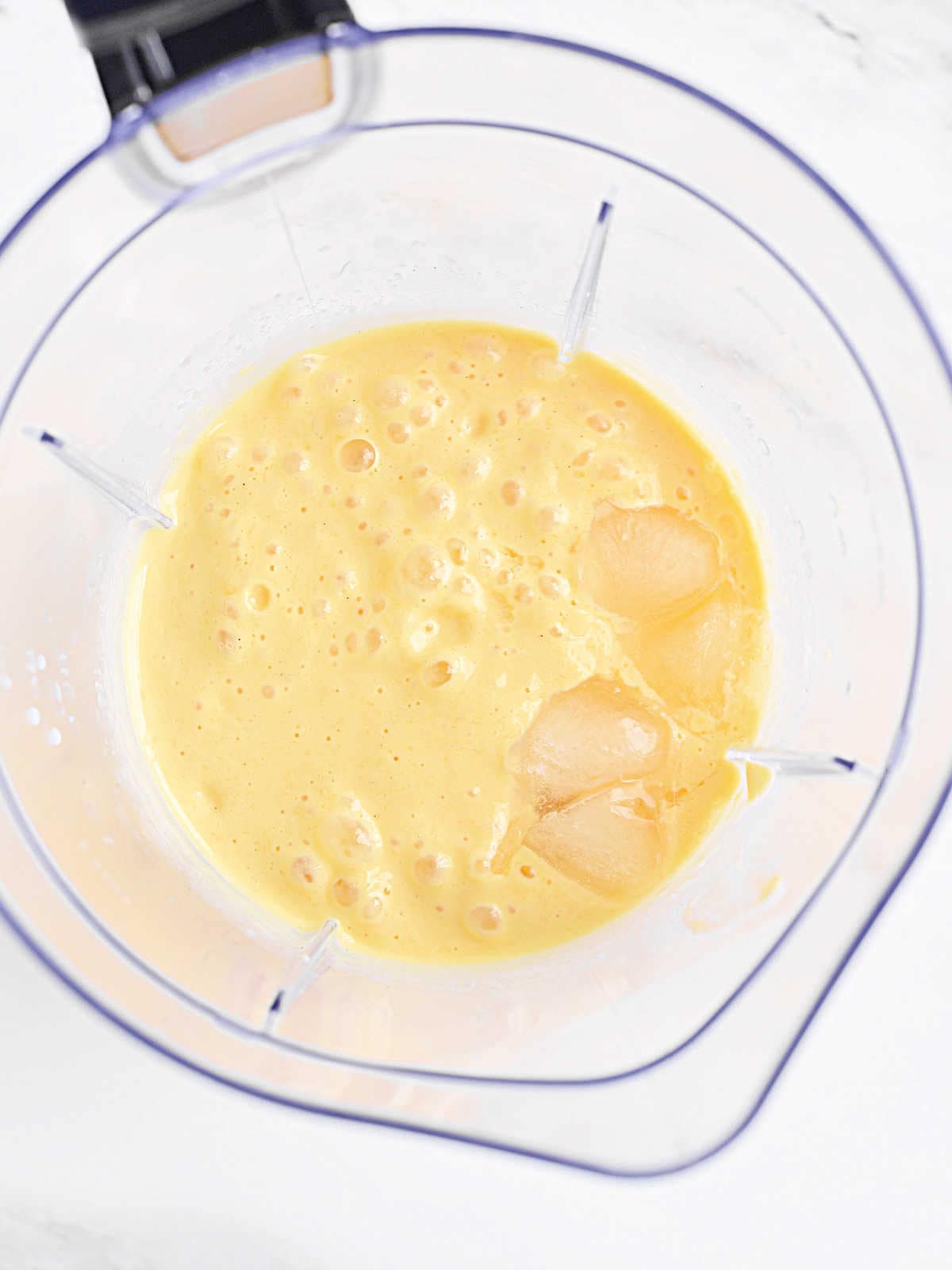
Kitchen notes
- Organization: read the recipe first and ensure you have ingredients at the correct temperature, equipment, and enough workspace. This will make the process so much easier.
- How do I prevent fibers from getting into the milkshake? Make sure to cut away the mango flesh from the pit properly. You can also strain the blended mixture through a fine mesh sieve if you want an extra-smooth texture.
- Should I add sugar to the mango milkshake? the natural sweetness of ripe mangoes and the sweet ice cream are often enough, but you can add a touch of sweetener like honey, maple syrup, agave syrup, brown sugar or coconut sugar if a very sweet milkshake is desired. Start with a small amount and adjust to taste.
- How do I make the milkshake creamier? Serve it with whipped cream on top, or use half and half instead of the milk or substitute ⅓ of the milk for heavy cream. These options will give your milkshake a thicker and more velvety texture and make it rich and dense.
Related recipes you might like:
Before you go
If you made this recipe and loved it, you can comment below and leave a five-star ⭐️ review. Also, if you had issues, let me know so we can troubleshoot together.
You can also subscribe to our FREE email series 'Baking the Best' and our regular newsletter. Or follow and save my recipes on Pinterest.
As an Amazon Associate, I earn from qualifying purchases. Read my disclosure policy.
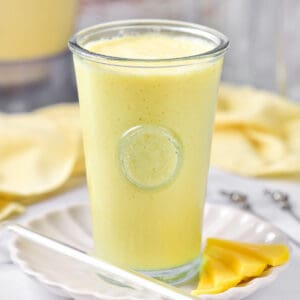
10-minute Mango Milkshake
Ingredients
- 1 ½ cups diced peeled mango, 1 medium-large
- 1 cup vanilla ice cream
- 3 cups milk
- ½ teaspoon vanilla extract
- ½ cup ice cubes
Instructions
- Place 1 ½ cups diced peeled mango (reserve a little for serving), 1 cup vanilla ice cream and ½ teaspoon vanilla extract in a blender jar. Process until you get a thick, creamy mixture.
- Add half of the ice cubes and 2 cups of milk.
- Put the lid on the blender with a lid and blend at medium speed for 2-3 minutes, until frothy and smooth. Check consistency and add more milk if needed. You should have a creamy milkshake, similar in consistency to a thick mango smoothie.
- Serve immediately with the reserved mango pieces or extra mango slices. For a dessert-like presentation, add whipped cream and caramel syrup on top.
- This mango drink is meant to be consumed cold, not at room temperature.

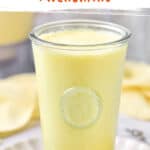

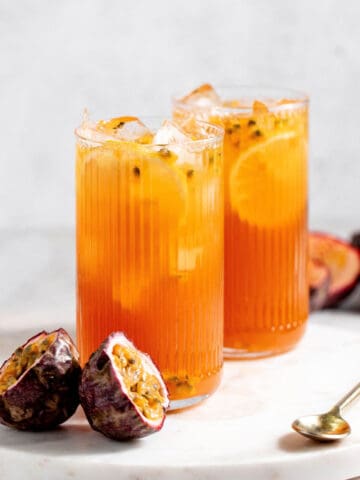
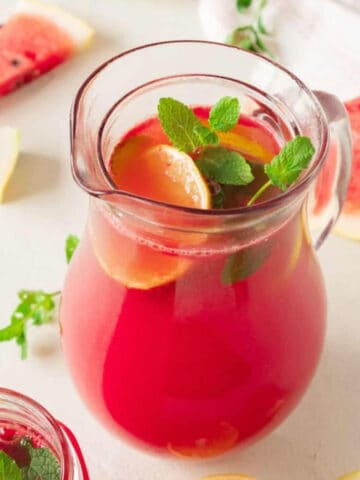
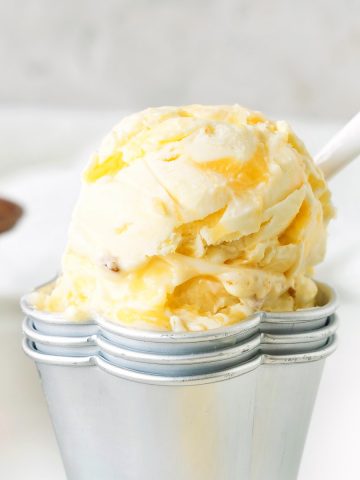
Rate and review this recipe